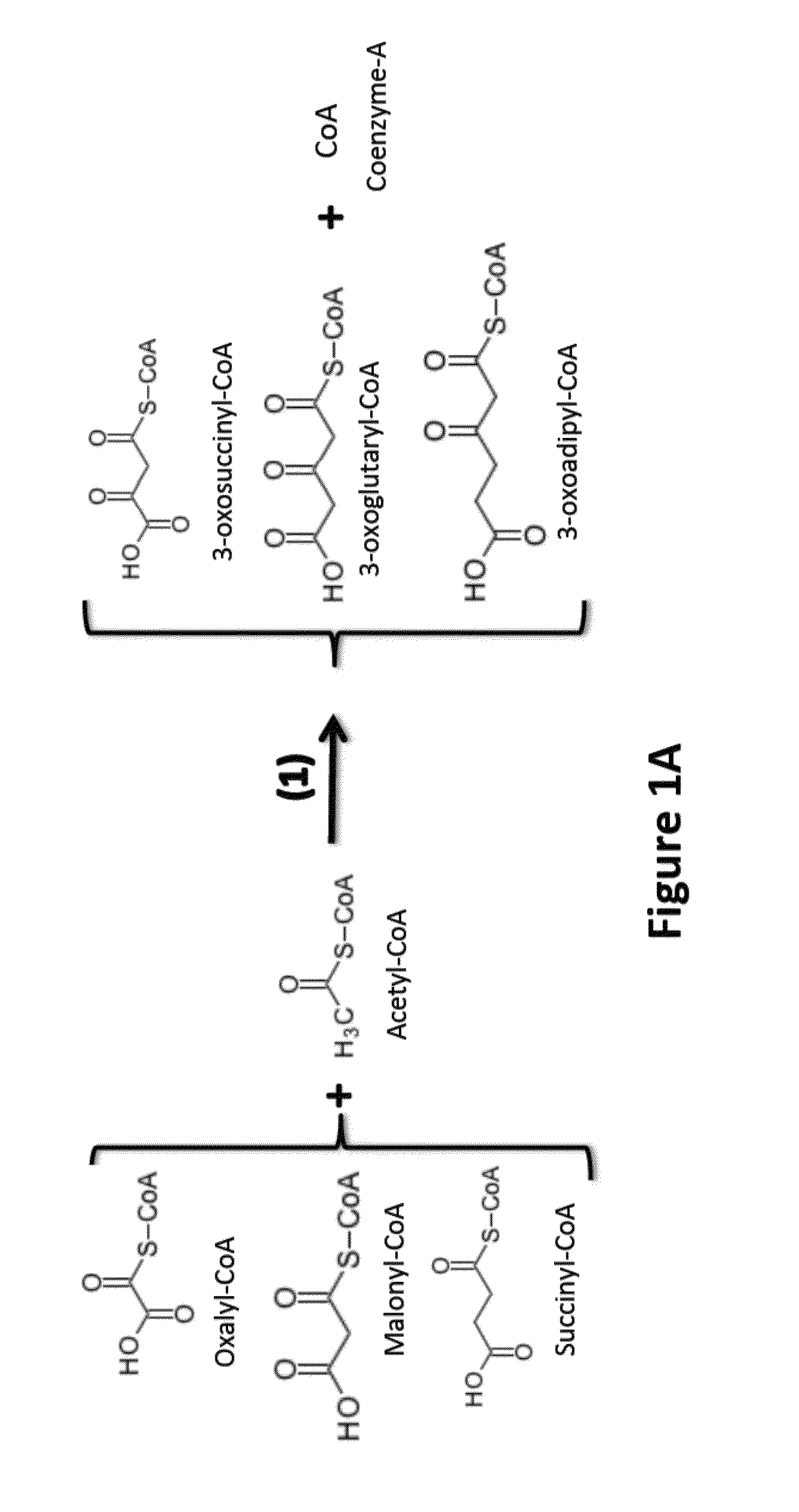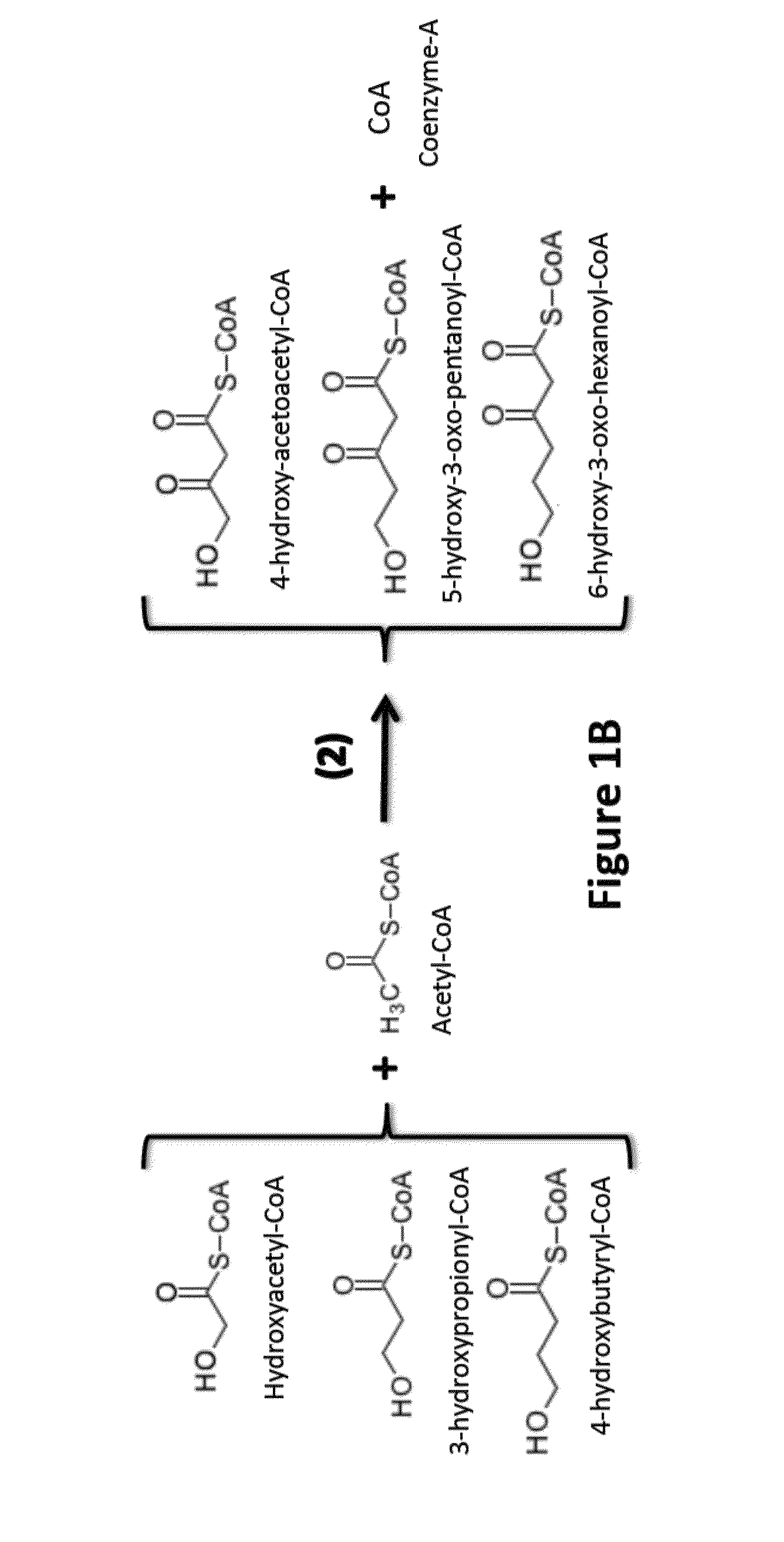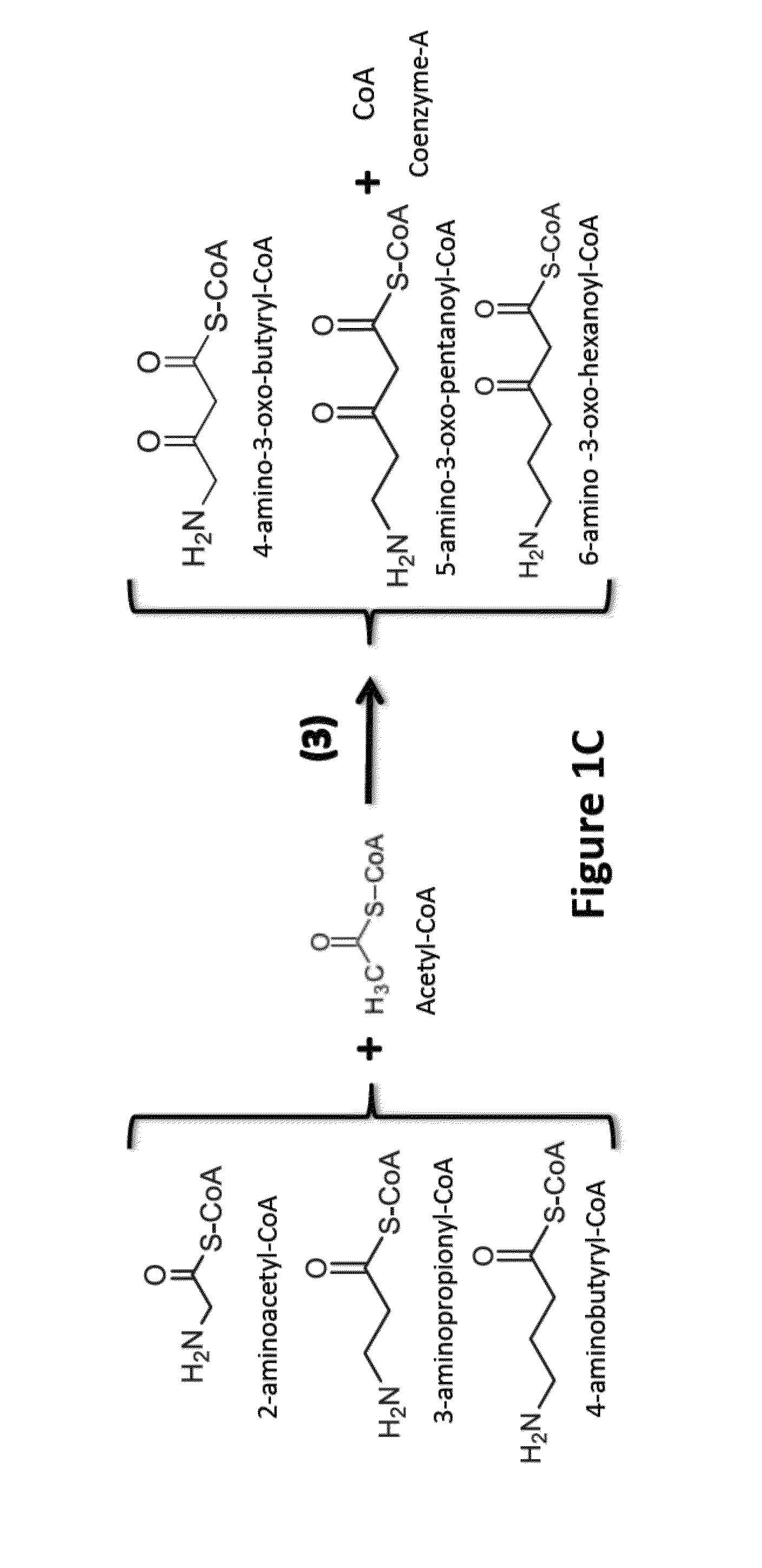Functionalized carboxylic acids and alcohols by reverse fatty acid oxidation
a technology of functionalized carboxylic acids and alcohols, applied in the field of engineered microorganisms, can solve the problems of limiting the ability to effectively manipulate such individual components to fine-tune, preventing the transfer of engineered pathways to other host organisms, and limiting the system-level approach. , to achieve the effect of reducing the expression of fermentation enzymes, reducing the production of lactate and aceta
- Summary
- Abstract
- Description
- Claims
- Application Information
AI Technical Summary
Benefits of technology
Problems solved by technology
Method used
Image
Examples
Embodiment Construction
[0082]Two general approaches are used in the invention to functionalize the alpha and omega carbons:
[0083]i) use of a primer or starter with a functionalized omega carbon, or
[0084]ii) functionalizing the alpha / omega carbon of an intermediate or a product of the engineered reversal of the β-oxidation cycle.
[0085]The latter could take place before or after the intermediates of the engineered reversal of the β-oxidation cycle have been converted to carboxylic acids and n-alcohols by the appropriate termination enzymes.
[0086]These two approaches are detailed below.
[0087]Use of Omega Hydroxylated and Omega Carboxylated Primer / Starter Molecules in the Engineered Reversal of the β-Oxidation Cycle:
[0088]The “normal / standard” starter / primer used in the engineered reversal of the β-oxidation cycle is acetyl-CoA, which leads to the synthesis of even-chain n-alcohols and carboxylic acids (61 / 440,192). Propionyl-CoA can also be used as starter unit / primer by thiolase(s) thus enabling the synthes...
PUM
| Property | Measurement | Unit |
|---|---|---|
| Current | aaaaa | aaaaa |
Abstract
Description
Claims
Application Information
 Login to View More
Login to View More - R&D
- Intellectual Property
- Life Sciences
- Materials
- Tech Scout
- Unparalleled Data Quality
- Higher Quality Content
- 60% Fewer Hallucinations
Browse by: Latest US Patents, China's latest patents, Technical Efficacy Thesaurus, Application Domain, Technology Topic, Popular Technical Reports.
© 2025 PatSnap. All rights reserved.Legal|Privacy policy|Modern Slavery Act Transparency Statement|Sitemap|About US| Contact US: help@patsnap.com



